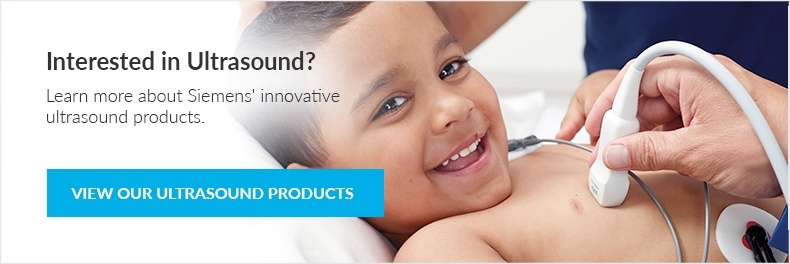 Think back to the last time you took a taxi (okay, more likely an Uber or a Lyft). When you hopped in, the driver probably had their phone set out on the center console, displaying your pickup location and destination, plus the quickest route to get there.
Think back to the last time you took a taxi (okay, more likely an Uber or a Lyft). When you hopped in, the driver probably had their phone set out on the center console, displaying your pickup location and destination, plus the quickest route to get there.
Neither you nor the driver thought twice about this experience. He or she picked you up, followed the directions the phone and app told him or her to take, and drove you where you needed to go.
Keep in mind that the driver took the suggested route despite quite possibly knowing the city like the back of their hand. They’re encouraged to follow one route yet able to use their own human intuition along the way if, for instance, a road was blocked due to construction or an accident.
Remember this example. Because it’s not dissimilar to how artificial intelligence will shape radiology in the very near future.
AI Takes Imaging by Storm
In the example above, a given route is illustrated instantly. Ask a human to plot that same route on a map and they would take much longer to do so. This is an indication of what the Uberification of imaging is going to look like, and it’s going to be quite beneficial for radiologists.
Computers have more data than ever before and, thanks to incredible advances in artificial intelligence, they can process that data within milliseconds before taking logical action based on a set of parameters.
Over the course of a career, an imaging specialist will take thousands of images of the human body, whether we’re talking about CT, MRI, X-ray or a variety of other modalities. But what no radiologist will be able to do, unless they possess an eidetic memory, is to instantly recall thousands of images and compare them with the millions and billions of images stored in a health system’s servers.
That’s what artificial intelligence has the ability to do. Patient data with an almost endless amount of permutations is sitting in the databases of hospitals across the country. For the first time ever, we can feed these images into programs to find the types of data that, for instance, indicate a serious medical condition needing immediate attention from a physician.
You have your experience to draw from, but a computer powered by artificial intelligence has the experience of decades’ worth of images. They can perform instant calculations that suggest a plan of action for a patient or, alternately, when a patient really doesn’t have anything to worry about and thus doesn’t require immediate intervention.
This has incredible ramifications for the world of imaging.
Supplement, Not Replacement
The big topic of conversation I’m hearing at conferences across the United States is what this means for the traditional role of the radiologist. In fact, it’s an issue that isn’t limited to radiology; physicians and providers of all kinds are dealing with this issue.
Putting clinical decision-making power into the hands of a computer is a leap of faith. The extreme version of this is what I think of as the WebMD-ification of the clinical world: you plug in a set of symptoms, or images, then stand there waiting for a computer to tell you the diagnosis and how to proceed.
These concerns are certainly valid, but the future of the healthcare field has been far more conservative. Instead, what we’re starting to see is clinicians using artificial intelligence to inform their diagnoses and care plans rather than leaning on the technology to create the care plan in its entirety.
This is a much more reasonable expectation of how artificial intelligence will affect the world of radiology. You run your series of images through a program, it compares the images to the scores of data available and provides the results and probable diagnosis.
It’s at this point that you can provide a closer analysis of what’s going on, combining the image result with myriad other insights only made possible through a career in radiology, to establish an appropriate care plan. The most complex and pressing cases will be surfaced for the radiologist and for the imaging specialist to take another look.
In this way, artificial intelligence is like a very organized personal assistant who can help you prioritize your work. Remember the Uber example? Well, for a majority of cases, you’re going to get a “route” that explains precisely what the results are and what they mean for the care plan. But then there are those unique cases where you have to alter the route to deal with the imaging version of a traffic jam.
The Workflow of the Future
I won’t lie: the advent of AI will change everyone’s workflow in some pretty fundamental ways. But I would argue these changes will ultimately be for the better of the care team and patients.
Results will come a lot faster than before. This will enable physicians to talk to patients about the findings sooner and increases potential patient volume since interpretation in many cases is going to be a lot more cut and dried.
The imaging process itself will also change. Imaging specialists can conduct their scans more quickly and efficiently. Technology exists right now to enable you to image a patient based on a series of automated criteria. The computer may already know the precise compression and angle parameters to, for example, conduct a mammogram for a person with x breast density versus a patient with y breast density. This speeds up the scan, allows you to focus on the patient and minimizes the need for re-scanning. This can lead to markedly improved patient satisfaction scores.
Rather than manually gathering the results and sending them on to a physician, this function can be automated as well. Results can be processed and sent immediately upon the scan’s completion. That means more patient volume and more time in your day to focus on other important tasks.
You’re also going to see much better cross-modality communication. Let’s say a patient submits to an ultrasound, an MRI and a biopsy. Those results will be developed and compared with one another even as AI simultaneously attempts to find commonalities with other cases.
This is a process you can expect to become nearly instantaneous. Rather than separate entities all looking at these scans and composing emails to each other and discussing findings amongst themselves and then with the patient, the results will be assessed immediately and distributed to the appropriate party or parties.
The AI Revolution is Here
With the pending change from fee-for-service to value-based purchase, AI will allow hospitals to become more efficient. It’s not outside the realm of possibility that, exposed to greater data than ever before, we’ll even see some brand new and innovative care plans developed to deal with common and not-so-common medical issues.
AI is ready to get you to your destination. It’s only a matter of time.








Comments